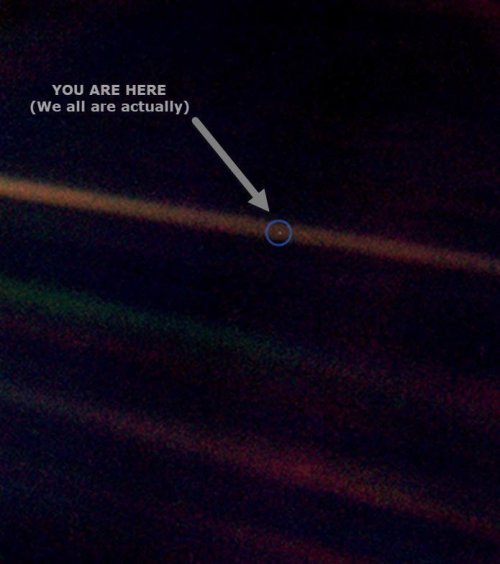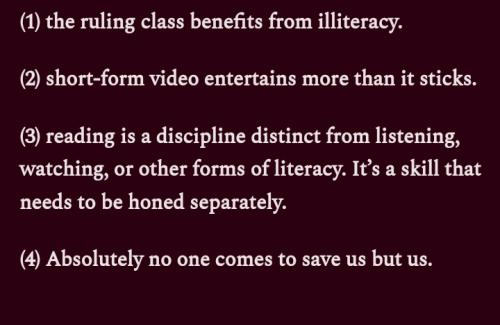Cancel Your Plans We’re Thinking About The Pale Blue Dot Voyager Pic Tonight






cancel your plans we’re thinking about the pale blue dot voyager pic tonight
More Posts from Sentimentalrobots and Others


Hey Tumblr newbies! This is your periodic reminder to not look like a bot!
Recently I've had an uptick in bot followers after a long lull, but I have ALSO had an uptick in followers who, once I click on their blogs, appear to be real, but have the default userpic, no bio, and/or "Untitled" for the blog title, and so look like bots at first glance.
Please don't forget to change your userpic - it doesn't matter what you change it to, you can turn the default one upside-down, just so it's clear a human has interacted with it! While you're at it, change the title of the blog to be literally anything other than "Untitled" and for good measure toss up a few words in your bio; naming a couple fandoms you're in is a good one that immediately marks you as real.
But if you only do one of these, change your userpic for sure. Many people will just see a default userpic and block on sight without doing any further investigation. If you have a default userpic you have probably already been blocked by a few people you followed! Is it fair that Tumblr makes you follow people when you sign up before it lets you change your userpic, and doesn't warn you that the default userpic will make people think you're a bot? No. But that's life on the hellsite.
“in the 21st century borders aren’t decided by force” and yet they are maintained by it

"Absolutely no one comes to save us but us."
Ismatu Gwendolyn, "you've been traumatized into hating reading (and it makes you easier to oppress)", from Threadings, on Substack [ID'd]



excerpt from In Memoriam by David Wojnarowicz, Day Without Art, 1989
All The Beauty And The Bloodshed, 2022



The Spanish surnames of many Filipinos have often misled foreigners here and abroad, who are unaware of the decree on the adoption of surnames issued by Governor-General Narciso Clavería in 1849. Until quite recently in the United States, the Filipinos were classified in demographic statistics as a “Spanish-speaking minority,” along with Puerto Ricans, Cubans, Mexicans, and other nationals of the Central or South American republics. The Philippines, as is well known, was a Spanish colony when Spain was mistress of empires in the Western Hemisphere; but the Americans were “hispanized” demographically, culturally, and linguistically, in a way the Philippines never was. Yet the Spanish surnames of the Filipinos today—García, Gómez, Gutiérrez, Fernández—seem to confirm the impression of the American statistician, as well as of the American tourist, that the Philippines is just another Mexico in Asia. Nor is this misunderstanding confined to the United States; most Spaniards still tend to think of “las Islas Filipinas” as a country united to them through the language of Cervantes, and they catalogue Philippine studies under “Hispano-America.” The fact is that after nearly three-and-a-half centuries of Spanish rule probably not more than one Filipino in ten spoke Spanish, and today scarcely one in fifty does. Still the illusion lives on, thanks in large part to these surnames, which apparently reflect descent from ancient Peninsular forbears, but in reality often date back no farther than this decree of 1849.
Somehow overlooked, this decree, with the Catálogo Alfabético de Apellidos which accompanied it, accounts for another curiousity which often intrigues both Filipinos and foreign visitors alike, namely, that there are towns in which all the surnames of the people begin with the same letter. This is easily verifiable today in many parts of the country. For example, in the Bikol region, the entire alphabet is laid out like a garland over the provinces of Albay, Sorsogon, and Catanduanes which in 1849 belonged to the single jurisdiction of Albay. Beginning with A at the provincial capital, the letters B and C mark the towns along the coast beyond Tabaco to Tiwi. We return and trace along the coast of Sorsogon the letters E to L; then starting down the Iraya Valley at Daraga with M, we stop with S to Polangui and Libon, and finish the alphabet with a quick tour around the island of Catan-duanes. Today’s lists of municipal officials, memorials to local heroes, even business or telephone directories, also show that towns where family names begin with a single letter are not uncommon. In as, for example, the letter R is so prevalent that besides the Roas, Reburianos, Rebajantes, etc., some claim with tongue in cheek that the town also produced Romuáldez, Rizal, and Roosevelt!
Excerpt from the 1973 introduction to Catálogo de Alfabético de Apellidos by Domingo Abella
-
 unenthusiastic-insomniac139 liked this · 2 weeks ago
unenthusiastic-insomniac139 liked this · 2 weeks ago -
 wiredbysophi reblogged this · 2 weeks ago
wiredbysophi reblogged this · 2 weeks ago -
 wiredbysophi liked this · 2 weeks ago
wiredbysophi liked this · 2 weeks ago -
 watdalump reblogged this · 2 weeks ago
watdalump reblogged this · 2 weeks ago -
 nerdneeniya reblogged this · 2 weeks ago
nerdneeniya reblogged this · 2 weeks ago -
 jeenyvl liked this · 2 weeks ago
jeenyvl liked this · 2 weeks ago -
 yoshirodolfo liked this · 2 weeks ago
yoshirodolfo liked this · 2 weeks ago -
 nostalgicwindowdreams-blog liked this · 2 weeks ago
nostalgicwindowdreams-blog liked this · 2 weeks ago -
 kingsprejudice reblogged this · 3 weeks ago
kingsprejudice reblogged this · 3 weeks ago -
 rocketslacker reblogged this · 3 weeks ago
rocketslacker reblogged this · 3 weeks ago -
 hylianforests reblogged this · 3 weeks ago
hylianforests reblogged this · 3 weeks ago -
 hypothermiatapes liked this · 3 weeks ago
hypothermiatapes liked this · 3 weeks ago -
 seventhsol reblogged this · 3 weeks ago
seventhsol reblogged this · 3 weeks ago -
 moaa reblogged this · 3 weeks ago
moaa reblogged this · 3 weeks ago -
 swellienn liked this · 3 weeks ago
swellienn liked this · 3 weeks ago -
 thedemonjelly liked this · 3 weeks ago
thedemonjelly liked this · 3 weeks ago -
 laidy-raine reblogged this · 3 weeks ago
laidy-raine reblogged this · 3 weeks ago -
 essentiallyuseless liked this · 3 weeks ago
essentiallyuseless liked this · 3 weeks ago -
 thepl-ace-icallhome reblogged this · 3 weeks ago
thepl-ace-icallhome reblogged this · 3 weeks ago -
 orchisfatalis liked this · 3 weeks ago
orchisfatalis liked this · 3 weeks ago -
 bisexualbillpaxton reblogged this · 3 weeks ago
bisexualbillpaxton reblogged this · 3 weeks ago -
 jumblejo reblogged this · 3 weeks ago
jumblejo reblogged this · 3 weeks ago -
 coolerectocactus liked this · 3 weeks ago
coolerectocactus liked this · 3 weeks ago -
 lasernahrwal liked this · 3 weeks ago
lasernahrwal liked this · 3 weeks ago -
 hidewaku liked this · 3 weeks ago
hidewaku liked this · 3 weeks ago -
 ecliip liked this · 3 weeks ago
ecliip liked this · 3 weeks ago -
 carnuatus reblogged this · 3 weeks ago
carnuatus reblogged this · 3 weeks ago -
 galvanisticinhuman reblogged this · 3 weeks ago
galvanisticinhuman reblogged this · 3 weeks ago -
 maybejustsomeguy reblogged this · 3 weeks ago
maybejustsomeguy reblogged this · 3 weeks ago -
 maybejustsomeguy liked this · 3 weeks ago
maybejustsomeguy liked this · 3 weeks ago -
 burichu reblogged this · 3 weeks ago
burichu reblogged this · 3 weeks ago -
 burichu liked this · 3 weeks ago
burichu liked this · 3 weeks ago -
 doritofalls liked this · 3 weeks ago
doritofalls liked this · 3 weeks ago -
 darkostea reblogged this · 3 weeks ago
darkostea reblogged this · 3 weeks ago -
 darkostea liked this · 3 weeks ago
darkostea liked this · 3 weeks ago -
 adhdrizzy liked this · 3 weeks ago
adhdrizzy liked this · 3 weeks ago -
 mxmonsterstew reblogged this · 3 weeks ago
mxmonsterstew reblogged this · 3 weeks ago -
 mxmonsterstew liked this · 3 weeks ago
mxmonsterstew liked this · 3 weeks ago -
 drgoofenshmirtz99 liked this · 3 weeks ago
drgoofenshmirtz99 liked this · 3 weeks ago -
 refrigeratedwater reblogged this · 3 weeks ago
refrigeratedwater reblogged this · 3 weeks ago -
 refrigeratedwater liked this · 3 weeks ago
refrigeratedwater liked this · 3 weeks ago -
 charrcoalhastalons liked this · 3 weeks ago
charrcoalhastalons liked this · 3 weeks ago -
 holofizz liked this · 3 weeks ago
holofizz liked this · 3 weeks ago -
 ceaselessbackflips liked this · 3 weeks ago
ceaselessbackflips liked this · 3 weeks ago -
 ohnoitsjesster liked this · 3 weeks ago
ohnoitsjesster liked this · 3 weeks ago -
 ohnoitsjesster reblogged this · 3 weeks ago
ohnoitsjesster reblogged this · 3 weeks ago -
 gothtopus222 liked this · 3 weeks ago
gothtopus222 liked this · 3 weeks ago -
 the-cannibal-canine liked this · 3 weeks ago
the-cannibal-canine liked this · 3 weeks ago

General interest @culturesinglarityGay shit and lots of dicks @demon-core-incidentDeep Space Nine relevance @temba-his-arms-wideHorny men's tailoring @captaindadsmenshosiery Pfp courtesy of @anonymous-leemur
207 posts